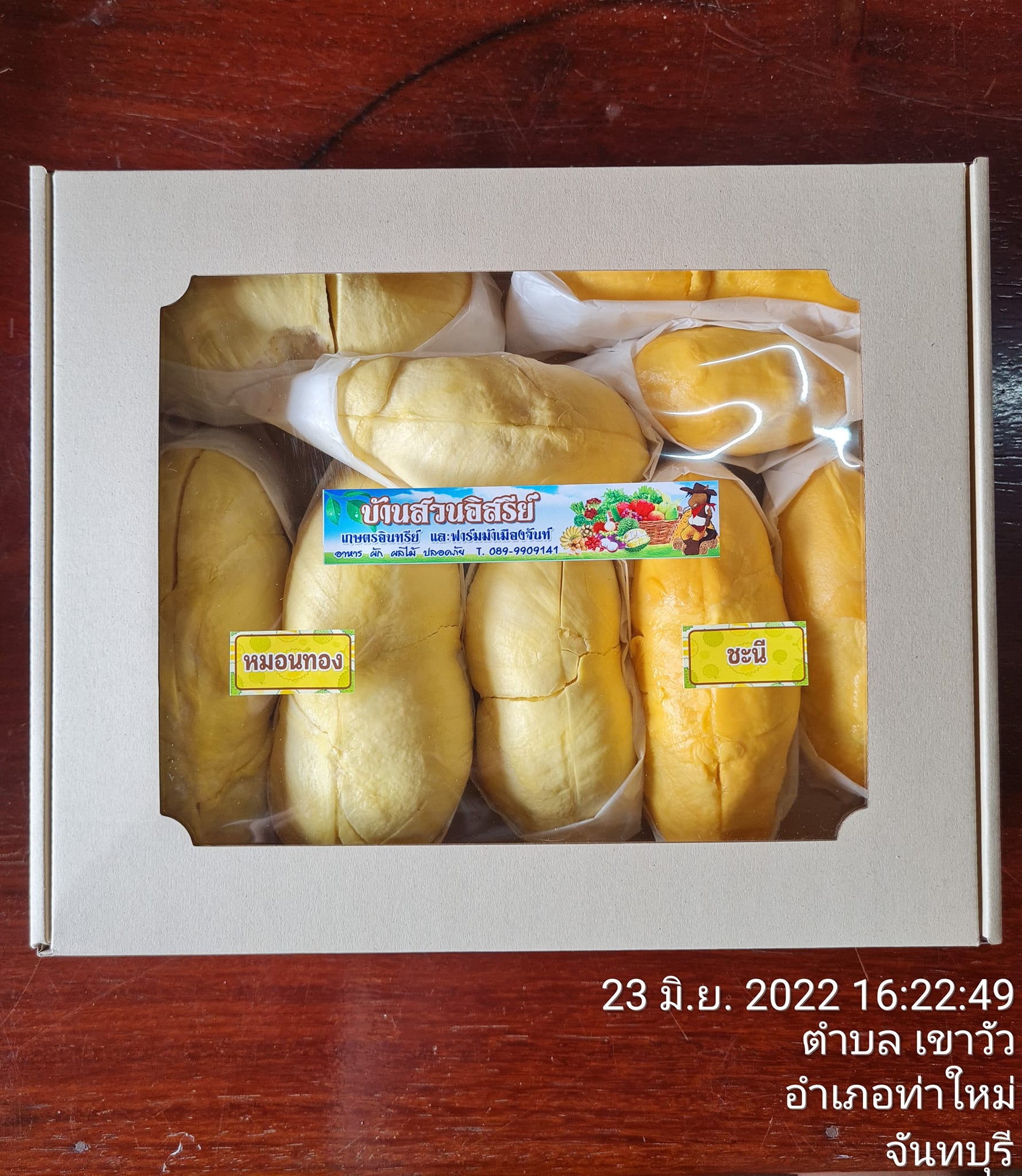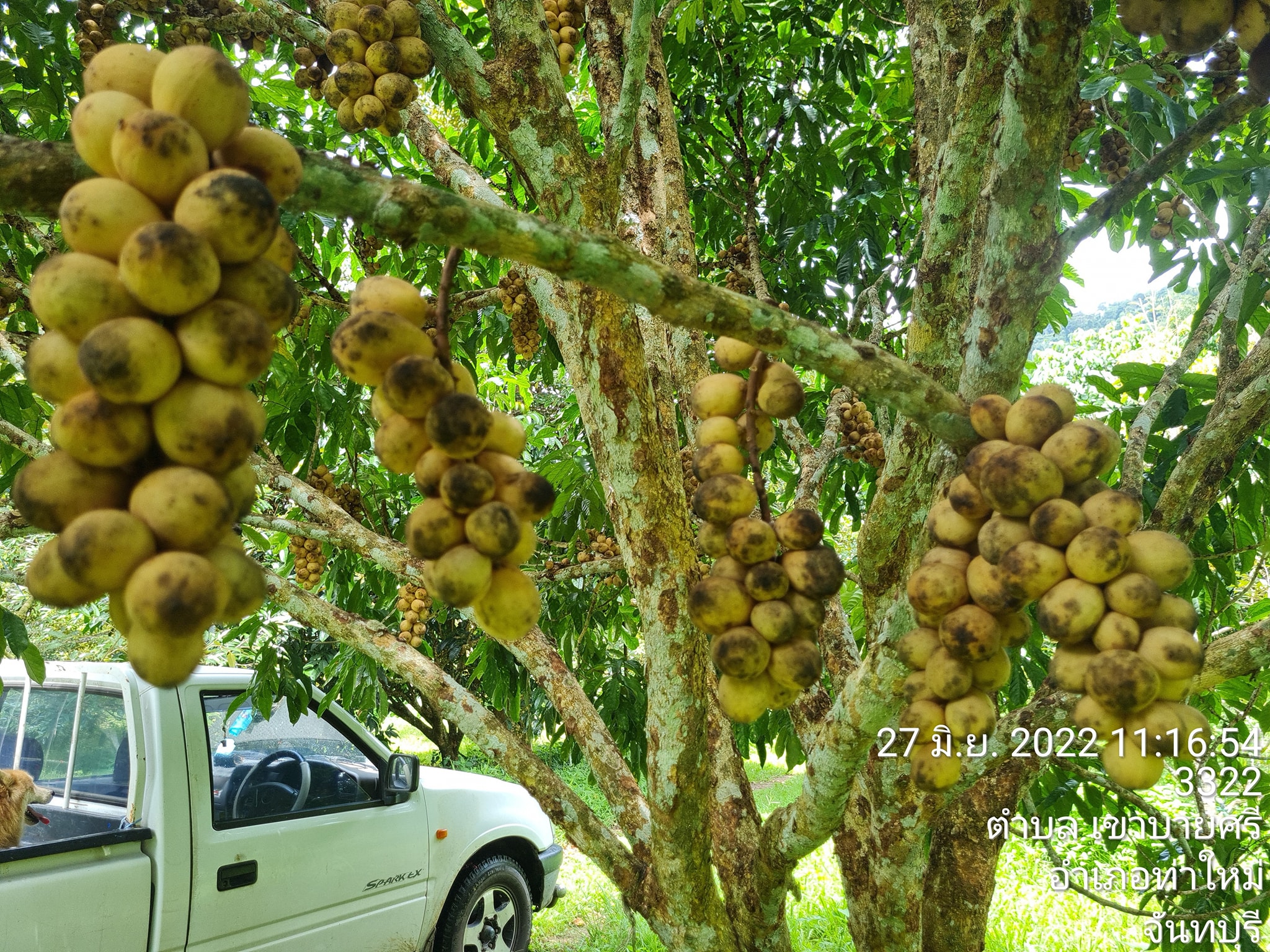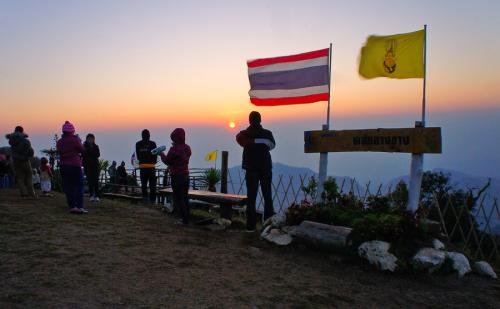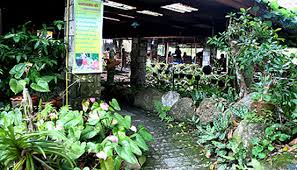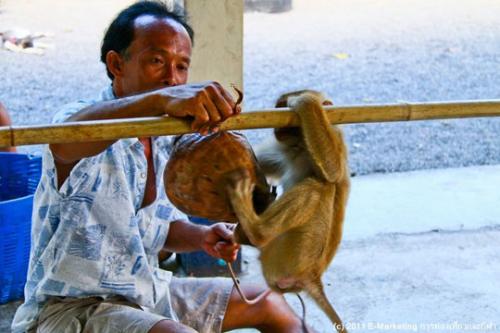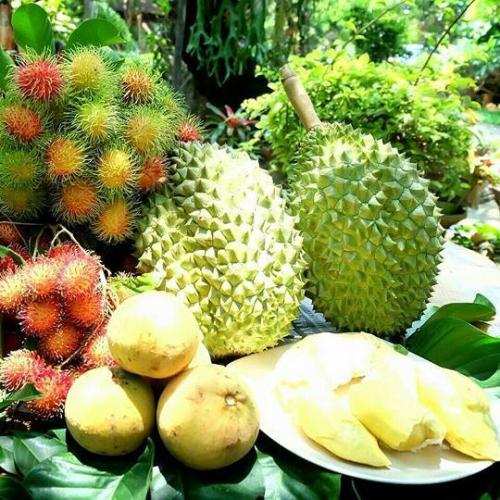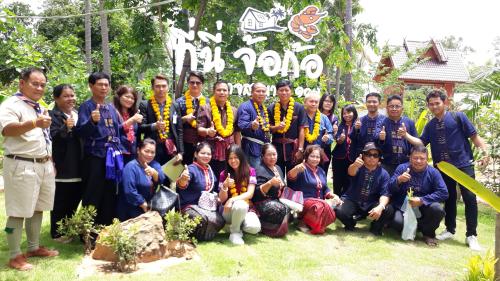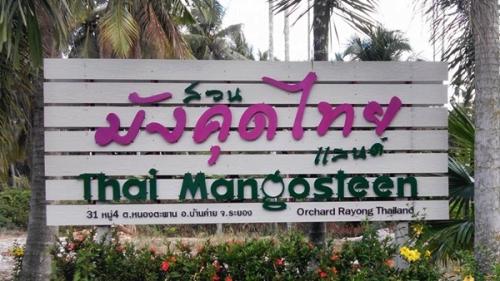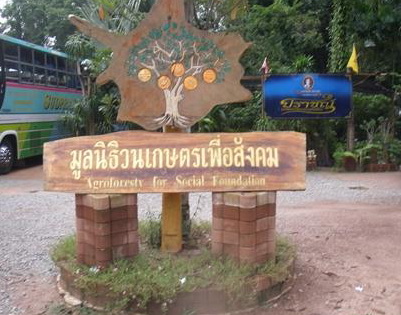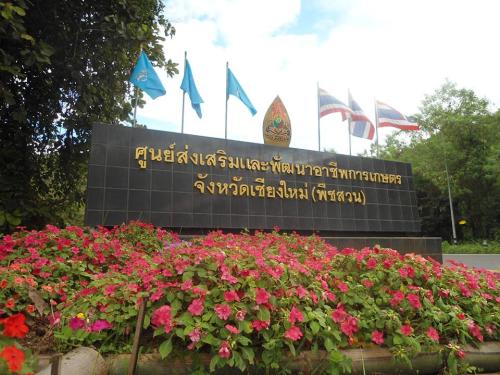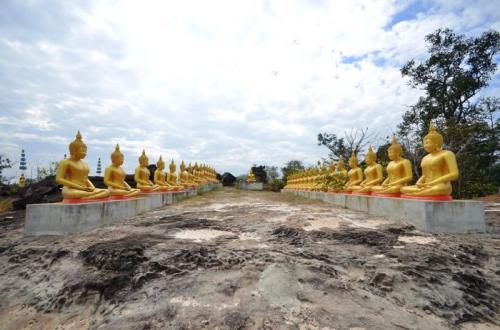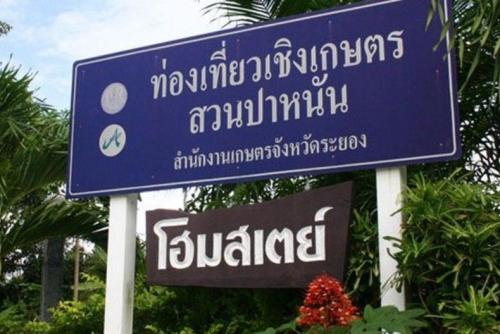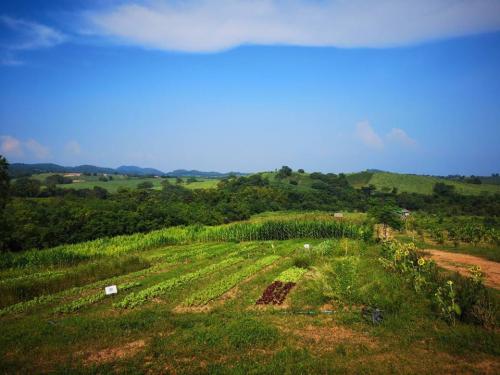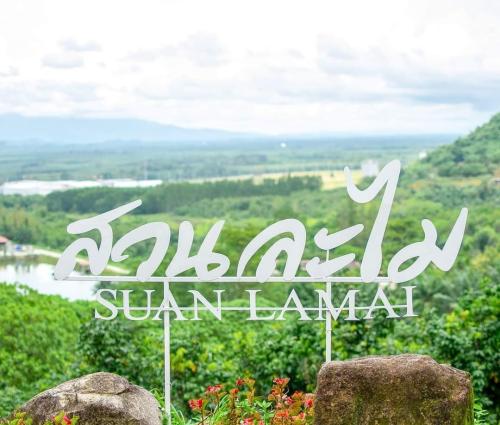Weather
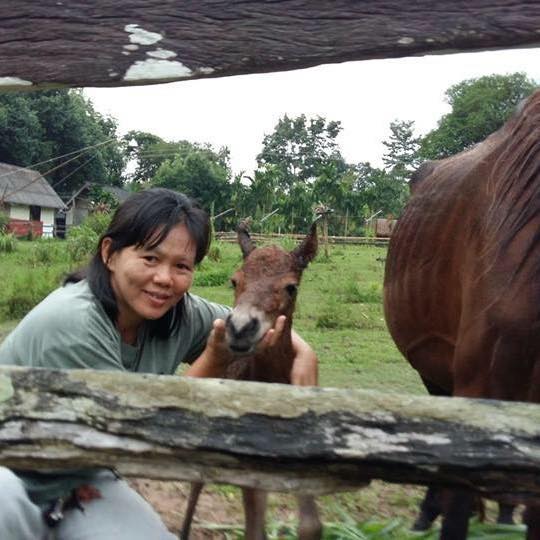
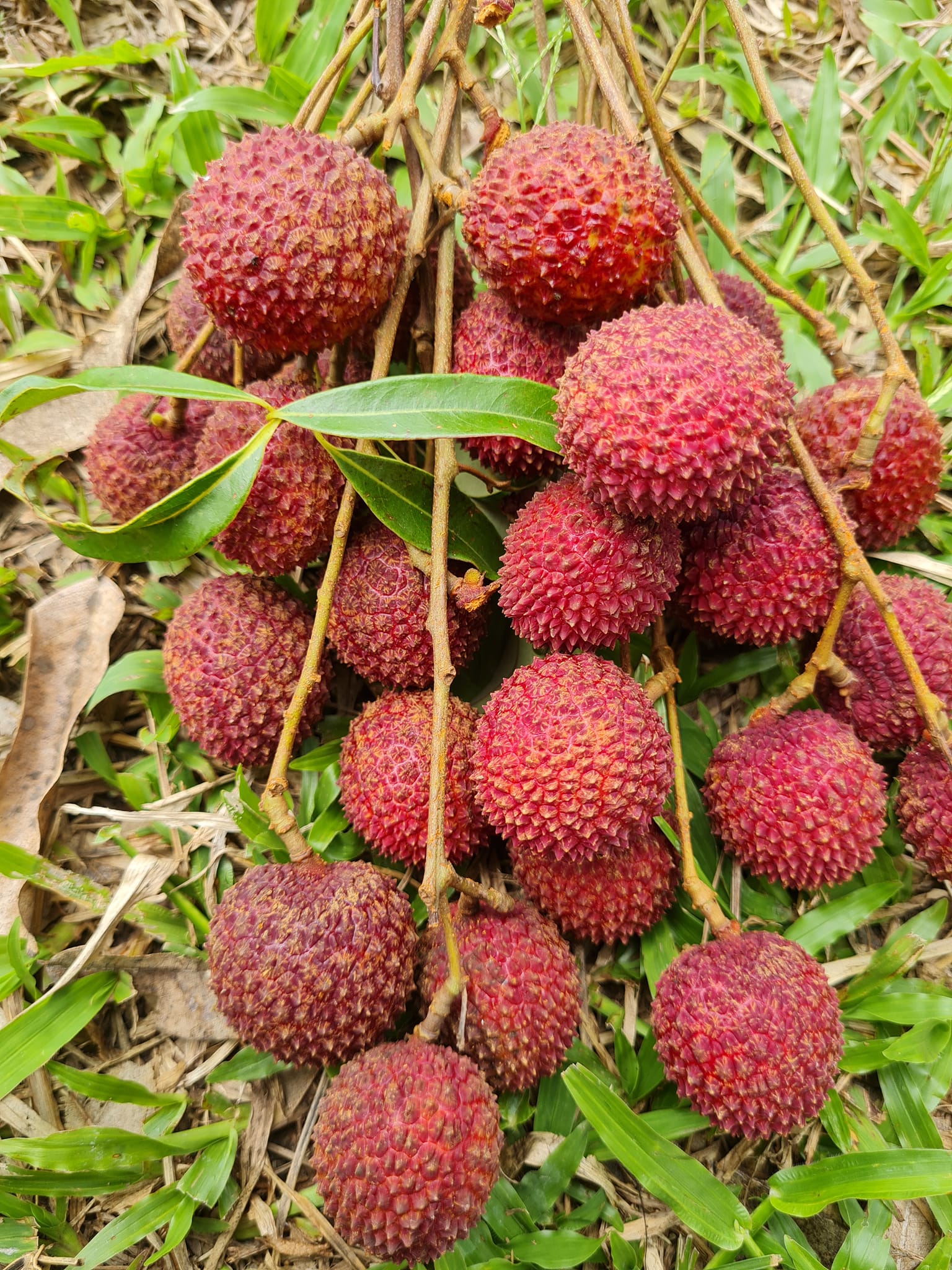
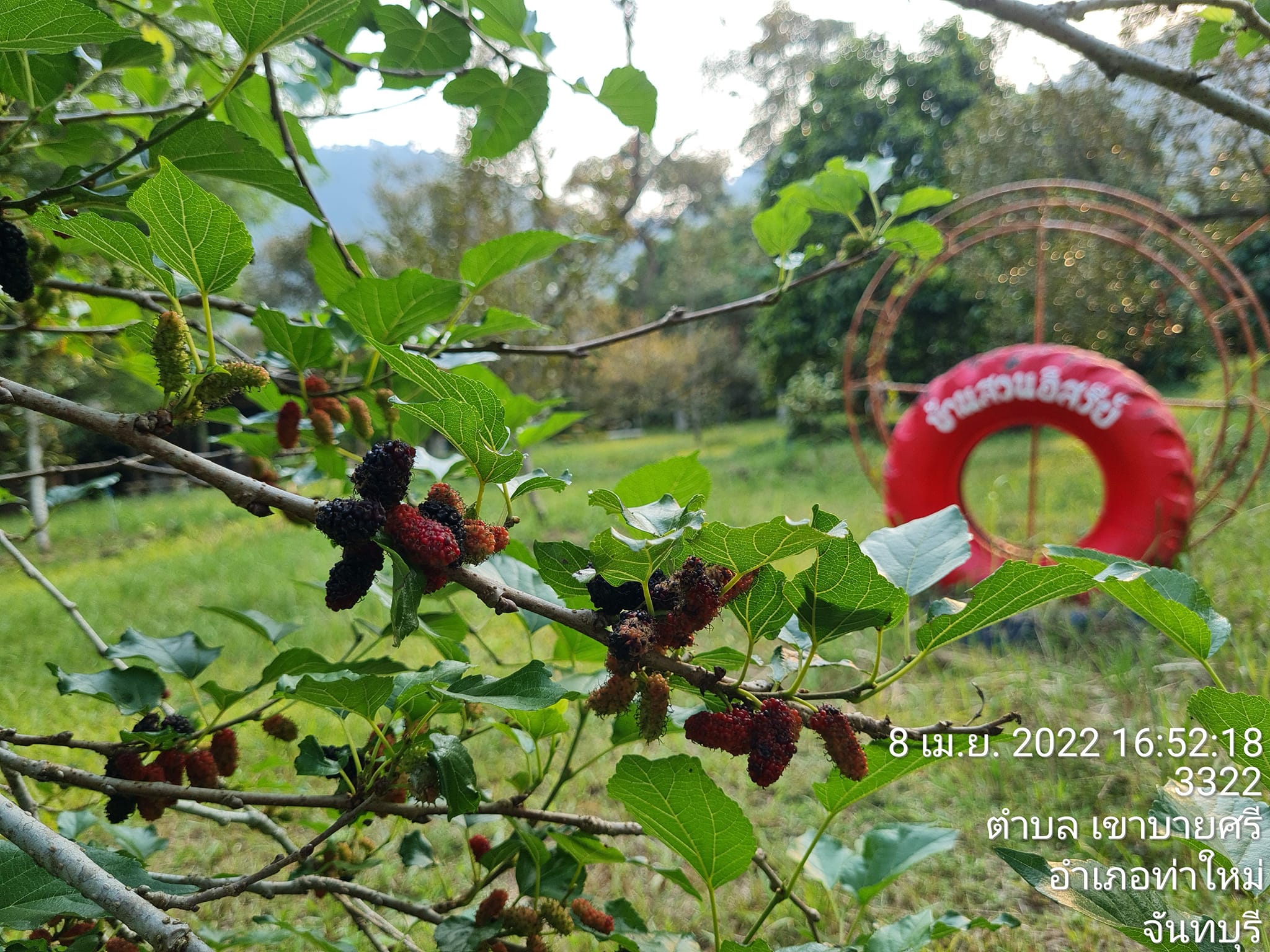
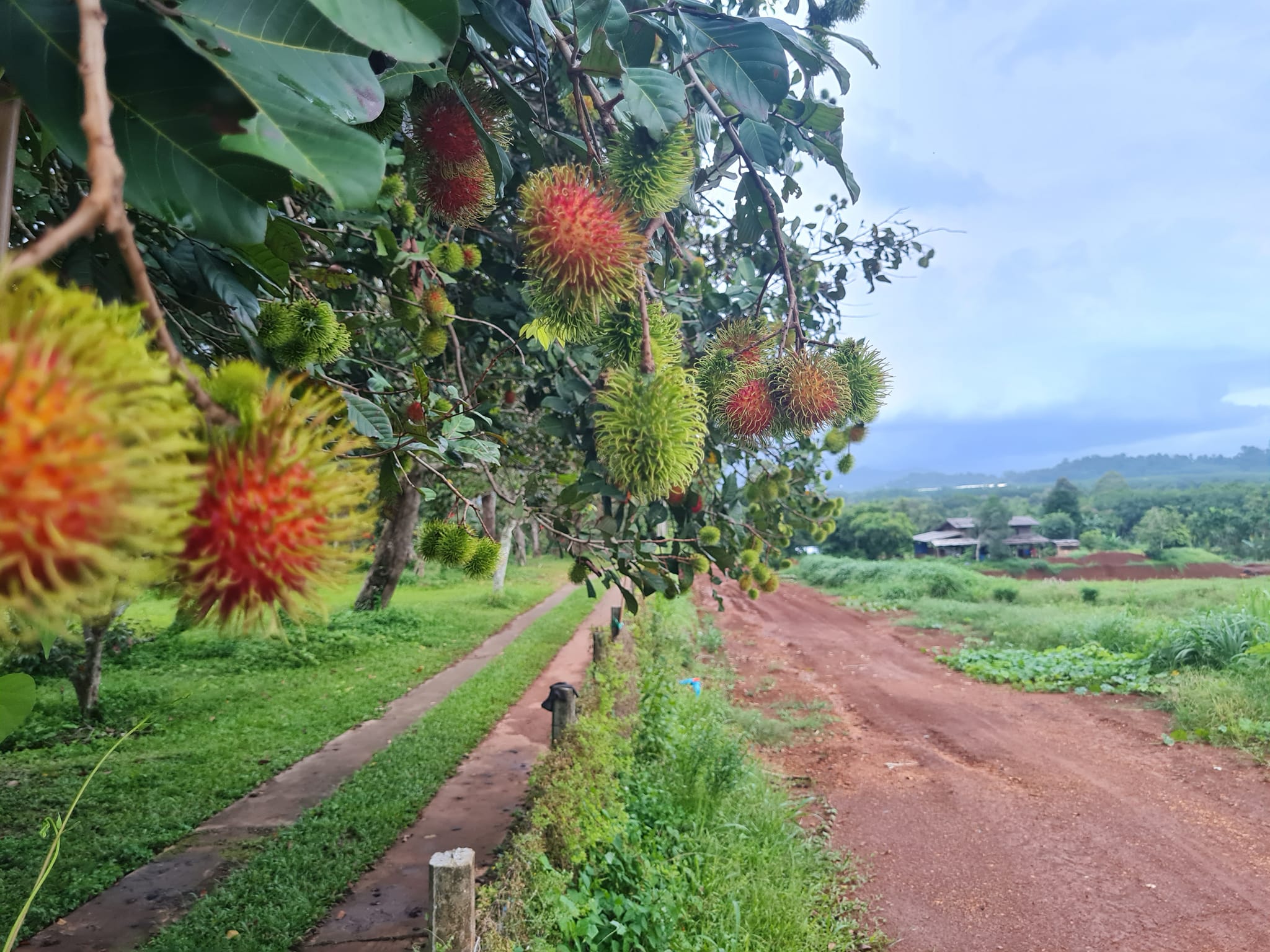
Closed
Business hours
• Sunday
: 09:00 - 16:00
• Monday
: 09:00 - 16:00
• Tuesday
: 09:00 - 16:00
• Wednesday
: 09:00 - 16:00
• Thursday
: 09:00 - 16:00
• Friday
: 09:00 - 16:00
• Saturday
: 09:00 - 16:00
Note
: -
Map
Review Score
0
Information
Learning center for organic farming Conservation of Thai horses, hippo therapy (for autistic children), visit the garden, eat fresh fruit from the organic farming orchards
Source
Thailand Tourism Directory
Recommended
Entrance fees
• Entrance fees: Non-fee
• Remark : -
Review (0)
Write Review
0
จาก 5.0
Availability
Value
Service
Relate Agritourism
The Royal Agricultural Station Angkhang is an ecotourism site where the nice garden and the interior design are very beautiful and attractive. This is the famous place for tourists to visit and see the cold weather plants and flowers growing. Numbers of tourists visit Doi Angkhang and the Royal Agricultural Station Angkhang, especially in winter.
Chiang Mai
Ruen Phak Kut is the location of the Chang Klang Agricultural Tourism Club to be a coordinating center for agricultural tourist attractions and network of agricultural tourist attractions in the Chang Klang sub-district, there are meeting rooms, rooms and activity grounds.
Nakhon Si Thammarat
Mr.Luesak, the owner of Kradae Chae Monkey Training Center, has learned how to train monkeys from his father. Every morning he usually leads monkeys to coconut grove to teach them to climbing coconut trees, to select ripe coconuts and pick off coconuts. Besides, you can also stay overnight at Mr. Luesak with reasonable price. In addition, Kradae Chae Monkey Training Center brought male monkey to teach how to collect coconuts which monkeys can collect around 500-1000 coconuts per day.
Surat Thani
Various kinds of fruit orchards, cool and charming atmosphere, along with accommodation and food
Kamphaeng Phet
It is a shrimp pond of the Cho Ko village. Tourists can visit to see how to catch shrimp and can eat freshly from the pond.
Roi Et
Thai Mangosteen Garden (Suan Khun Panya) has more than 300 mangosteen trees and various kinds of fruits, such as rambutan, durian and dragon fruit. It is an agro-tourism attraction where the visitors can come and enjoy the fruit buffet for 150 baht per person. This garden also has the homestay accommodation available.
Rayong
Ban Santitham is located on the area of 16,000 square meters with more than 700 kind of healing herbs spread over the area. There is also a Thai wooden house which is used to exhibit a variety of ancient agricultural tools, and there is a barn, rice threshing and rice milling equipment display behind the house. In addition, a part of the house is reserved for youth camp with the space for recreation activities.
Chachoengsao
"...Taste the tea......Chiangda vegetable tea produced in the center.
...see the garden...see the plots to learn about agriculture Flowering plants - ornamental plants, fruit trees - perennial plants, sufficiency economy, vegetable and herb plants, economic insects, check dams, rare plant collection plots, natural check-in points, nature walks, watershed viewing, viewing Local birds...etc.
...invite to shop...agricultural products of the Farmer Network group at the sales point in front of the center.
Tourism program :
1 day trip inside the center
2 days 1 night trip..with other nearby attractions
Route links to other attractions:
'- Ban Tai Lue, Ban Luang Tai Distance before reaching the center 7 km.
- Sri Mung Muang Temple Distance before reaching the center 7 km.
- Wat Phra That Doi Saket Distance before reaching the center 7 km.
- Nong Bua Phra Chao Luang Distance before reaching the center 5 km. Suspension bridge Mae Kuang Udom Thara Distance before reaching the center 10 km.
- Doi Saket Hot Spring Distance from the center 9 km.
- Huai Hong Krai Royal Development Study Center The distance from the center is about 4 km.
- Royal Initiative Project, Agricultural Learning Center, Demonstration Field, 85 Rai
The distance from the center is about 7 km."
Chiang Mai
Phu Tham Phra is a large cave, about 3 wa wide, about 8 wa long, located on the southern slope of the mountain. There is an entrance along the rock niche which is majestically located around a tunnel; from the mouth of the cave to the north can walk comfortably. Tham Phra Buddha Cave has 2 levels of nature as a place to be enshrined of Buddha statues, which are lined up in rows and there are 2 reclining Buddha images, Phra Kajjana Buddha images, built during the reign of Ajarn Dee Chano in this beautiful cave
Phu Tham Phra is a small mountainous area. The area is about 200 rai, with mixed deciduous forests that are generally quite complete, providing shady, cool weather. It is the watershed source of many creeks. The stone pillar looks like a tourist attraction of Phu Pha Thoep. And there is a viewpoint as a beautiful natural source near the ascent, there will be a brick arch to be "Phu Ngo", the locals call Khong Gate which is located in the north of Phu Tham Phra, about 1 kilometer away. Currently, only ruins remain.
The sanctity of Phu Tham Phra that has been passed down from generation to generation is that if villagers in that area go out to find forest products; they must come to this cave to worship. Then there will be luck in making a living and escape from all dangers.
Yasothon
Panan garden has many types of fruit planted there, including rambutan, mangosteen, longkong, durian. The cost of visiting Panan garden during May - June, when the orchard is full of fruit is 200 baht per person (price subject to change). In addition, there is also accommodation in the orchard.
Rayong
Khao Yai Farm Village is an agricultural tourist attraction. There are sheep and rabbit farms, a learning center, and a comprehensive tourism tour. There are also more than 20 activities such as mushroom picking, egg picking, terrarium gardening, clay oven pizza making, herbal candles making, clay pottery making, soap making, etc. It opens every day, and entrance fee is 100 baht.
Green Me Organic Farm: The uniqueness lies in the way of organic farming. There are rice cultivation, animal husbandry, vegetable cultivation, mushroom cultivation and quality product processing. And there are accommodations for tourists who want to learn organic farming methods. Visitors should contact in advance.
Pakchong Vegetable Garden is outstanding for the sufficiency farming method. It is divided into learning bases for visitors to study and visit and Mr. Noom Sek, the owner of the garden who was selected as an outstanding farmer They can also transfer knowledge and experience in agricultural management as well.
Guno Garden is a source of high quality original organic salads. There are vegetable planting demonstrations and vegetable planting activities for children as a group and also teaches how to make vegetable salads, salad rolls as well
Khao Yai Floating Market: there are more than 200 kinds of plants and flowers to see and study. And there is also a hand-roasted coffee activity for tourists to participate in the activity. Open every day, entrance fee is 100 baht.
There are many vineyards among Pak Chong agro-tourism community enterprises such as Suan Kwan Si, Suan Chaiyapruek, Khun Wan Vineyard, Suan Phomchon, Alsidini Wine Vineyard, etc.
Pak Chong Durian Orchard: a kind that must be reserved in advance only with the distinctive taste of Pak Chong fruit makes tourists must travel to taste the garden Zeta Durian Orchard, Rai Wong Kaset 2 orchards in our group that produce quality Pak Chong durians.
Ken Pha Phong Farm: Organic Strawberry Farm Open for tourists to collect themselves; and more importantly, it is delicious and safe
Suan Lung Chob, a large garden on an area of more than 1200 rai, grows bananas, mangoes, dragon fruit, with export quality, suitable for group study trips.
Rai Wanakun, a collection of rare plants from all over the country Tourists that they visit should be booked in advance.
Uncle Somnuk Anthurium Garden Anthurium flower garden and potted moss and cut flowers. Visitors who visit or see the event should attend in advance.
WB Organic Farm The organic farm has a large compost plant. grow vegetables wholesale Organic Thailand Standard Suitable for study groups to visit as a group
Tour program:
Pink Route Suan Kwan Sri Suan Chaiyapruek Suan Anthurium Lung Somnuk
Blue Route Khao Yai Farm Village Green Mee Pak Chong Vegetables Khao Yai Floating Market Alsidini Wine Vineyard
Green Route Kenphapong Farm, Uncle Chob Garden, Khun Wan Vineyard
Route links to other attractions:
Khao Yai National Park, a distance of about 50 kilometers
Pak Chong Night Market 20-30 kilometers
Nakhon Ratchasima
"Suan Lamai" is a large orchard on an area of over 800,000 square meters with a tram service for tourists to explore the orchard and enjoy various kinds of fruit in a buffet such as a Rambutan, Mangosteen, Longan, Grapefruit during fruit season. During the Winter, "Suan Lamai" will opens for visitors to visit a Strawberry farm and colorful Cosmos flowers garden. There's also a sheep farm for animals lover who wants to feed a sheep and take photos with those sheep.
Rayong

